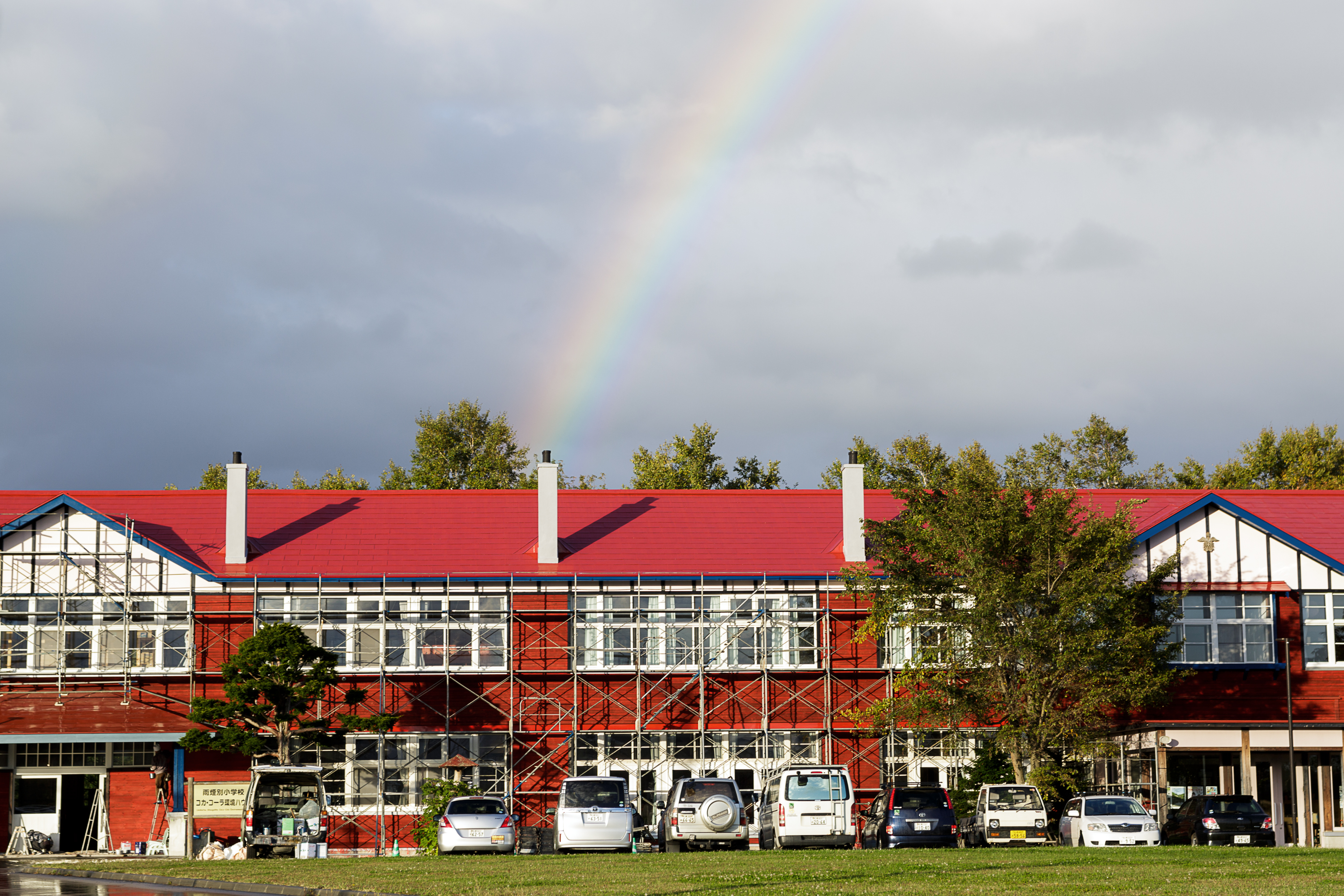
 | FEATURE ARTICLES | Let's go on a bus tour!
| FEATURE ARTICLES | Let's go on a bus tour! 
In recent years, special interest tours (SIT) have been gaining popularity among those who have grown tired of standard travel. Rather than visit the regular sightseeing spots, the package tours are structured around specific themes such as health, culture and the like.
This time, Tokyo Gakugei University students visited the town of Kuriyama in Hokkaido, on a tour they are involved in planning on the theme of water. The 16 graduate and undergraduate students are members of the university’s “Water Special Interest Tours/WaSIT”. Titled “Field Study in Hokkaido,” this was a pre-tour trip to learn more about aquatic locations.
The first stop was Yubari Shuparo Dam, where they visited a control corridor known as an inspection gallery built into the interior of the dam wall.
“I was surprised by the size of the dam when I looked up from below.” said Matsubara Shohei.
“It’s my first time in Hokkaido; the dams here are huge.” said Asazuma Shiori.


The tour comprised a packed program that included, among other things, a river survey of aquatic organisms, visits to regenerated marshland and a fishway handmade by local residents, as well as a visit to the Chitose Salmon Aquarium where an explanation was given by the head of the facility.
“When you hear of aquatic studies, you think of nature-related activities, but there are various aspects such as infrastructural facilities like dams, and water closely related to food culture such as in the production of sake. The aim of this tour is to get people to realize this,” says activity leader Yoshitomi Tomoyasu, associate professor at the university’s Environmental Education Research Center.
“We want people to experience Kuriyama’s abundant nature and aquatic environment, to broaden the mind. It’s difficult to experience anything similar in Tokyo.”

Associate Professor Yoshitomi Tomoyasu

“I enjoy the fieldwork.” said Yoshida Arisa.
“I work part time in an izakaya so I’m looking forward to visiting the sake brewery.” said Kojima Ryoko.
“I want to know how the water has been protected.” said Furuya Eriko.
“I want to make use of my major, graphic design, in environmental education teaching materials.” said Asazuma Shiori.
The whole process of actually going on the trip, to designing the teaching materials is part of the learning, and this process is conveyed on FB from time to time.

“Water is difficult to grasp; the rain permeates the land and flows from the river to the sea, where it evaporates and changes state. We want people to be aware of the circulation of the water and, with this study, expect a program with a wide perspective from aquatic locations,” says Associate Professor Yoshitomi.
Social needs regarding water related education have increased since the “Basic Act on Water Cycle Policy” was promulgated three years ago, and as these activities are coupled with tourism, hopefully it will lead to the development of human resources involved in conservation and public awareness of the aquatic environment.

WaSIT applied to the Coca-Cola Foundation (USA), and its 5-year project was adopted and is currently in its 2nd year. Last year, the group learned about regeneration efforts in Minamata Bay in Kumamoto Prefecture, and took part in fieldwork related to conservation activities in Ibaraki Prefecture. Each group planned tours on themes such as aquatic organisms, public baths, hots springs and the like. As well as the production of reports and guidebooks, a photo exhibition as well also held.

The students were accommodated at the “Uenbetsu Shogakko Coca-Cola Environment House,” a former elementary school building regenerated with support from the Coca-Cola Foundation.
“It’s been renovated so beautifully” said Furuya Eriko.
“I was a valuable experience for everyone to be able to stay overnight together.” said Nomakuchi Wataru.

After dinner, Takahashi Shin, who implements the Satoyama Plan in Kuriyama, introduced the 20-year plan for creating “satoyama” woodland areas, being carried out by local residents. As a result of persistent restoration activities in aquatic locations, Takahashi was able to report that last year, spawning salmon and trout were confirmed in Kuriyam’s rivers for the first time in 73 years.
His talk prompted numerous questions from the students, as their interest in the subject resulted in the session ending considerably later than planned.
